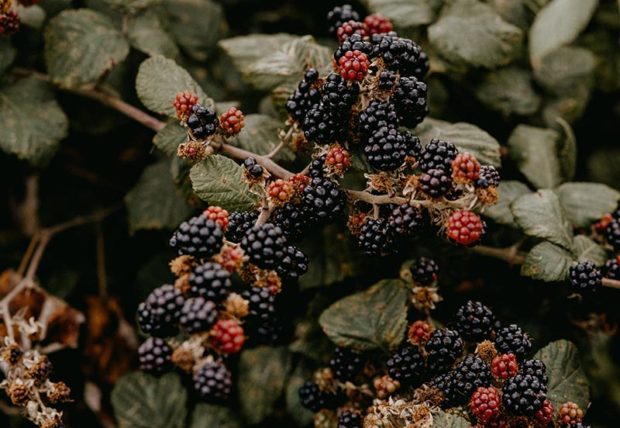
How do I trellis thornless blackberries? I have several 2- to 3-foot-tall plants that have many hard-to-tame shoots pointing in every direction. I planted them last spring and none had fruit last year. I wound the longest ones around the wire between the metal fence stakes, which are about 3 feet high. How and when do I prune?
Thornless blackberry primo canes tend to grow along the ground like a vine for the first two years after planting. They also do not produce a large crop the first season. Proper pruning and strong wire support are needed. For thornless blackberries, you need two wires at heights of 3 feet and 5 feet from the ground between posts 20 feet apart. Because of the vine-like nature of this bramble fruit, individual plants should be 10 feet apart.
Now for pruning. Cut back the main trailing canes at the top by several inches in late winter to 4 to 6 feet. That would be roughly March, before bud swell. This pruning forces development of sturdier, more fruitful canes. Keep them tied to the upper wire. For wild lateral shoots, select only those parallel to the wires, trimming them back to about 12 inches. Guide and tie them to the lower wire. Remove cane shoots that go out perpendicular from the wire trellis. This forces the plant to concentrate its energy on the remaining canes for healthy growth and better fruit production. Make sure you prune out any damaged or weak, spindly canes. Proper pruning and trellising will bring your thornless blackberries to an enjoyable production level.
RELATED: Can I grow sweeter ‘Black Satin’ thornless blackberries?
